If you're serious about growing your ecommerce brand, Facebook Ads aren't just an option—they're a core component of your sales machine. With a massive global audience and incredibly granular targeting tools, the platform is non-negotiable for scaling. It's the most direct path you have to turn social media scrollers into a predictable stream of revenue.
Building Your Ecommerce Growth Engine with Facebook Ads
The question isn't if you should run Facebook ads for your store, but how to build them into a reliable growth engine. When you can potentially reach over 2.28 billion people worldwide, you've got a direct line to new customers that very few other channels can offer. But the real magic isn't just the reach; it's the ability to connect your specific products with the exact people who are most likely to buy them.
When executed correctly, the results speak for themselves. Certain ecommerce niches see conversion rates topping 14%, a testament to the platform's power. You can dive deeper into these performance benchmarks to get a feel for what's possible.
However, success with Facebook ads for ecommerce isn’t about randomly boosting posts. It’s about building a smart, results-oriented framework tied to your actual business goals from day one. Whether you’re a new boutique trying to generate awareness or an established store focused on repeat business, Meta has an objective designed for you.
The Foundation of a Profitable Campaign
Your first and most important decision is choosing the right campaign objective. This instructs Meta's algorithm on what you want to achieve, directly impacting who sees your ads and what you're asking them to do. Pick the wrong one, and you’ll spend money without getting any closer to your goal.
For ecommerce, a few objectives are absolutely critical:
- Awareness: The goal is simple: get your brand in front of as many fresh eyes as possible. This is perfect for a new store launch or when you’re introducing a completely new product line.
- Traffic: This objective is all about driving people from Facebook to your website. A local clothing brand in Miami, for instance, might use this to send people to a new seasonal collection page.
- Engagement: This one helps you build social proof. You'd use it to rack up more likes, comments, and shares, which makes your ads look more trustworthy and interesting to people who see them later.
- Sales (Conversions): This is the holy grail for most ecommerce stores. This objective tells Facebook's algorithm to hunt down users who are most likely to make a purchase, add to their cart, or take another valuable action on your website.
A classic mistake many new advertisers make is jumping straight to a Sales objective with a brand-new ad account and a "cold" Meta Pixel. Without any data to work with, the algorithm is just guessing, which leads to sky-high costs and poor results. It's much smarter to "warm up" your Pixel with a Traffic or Engagement campaign first before asking it to find buyers.
The following table breaks down how to align these objectives with your specific business goals.
Matching Ad Objectives to Your Ecommerce Goals
Choosing the right objective is the first step in telling Meta exactly what a "win" looks like for your campaign. This table clarifies which objective to use for different stages of your marketing funnel.
| Objective | Primary Goal | Best For |
|---|---|---|
| Awareness | Reach the maximum number of people in your audience to build brand recognition. | New store launches, entering new markets, or promoting a major brand event. |
| Traffic | Send people from Facebook to a specific URL, like a blog post or landing page. | Driving visitors to a new collection, promoting a blog post, or warming up a new Pixel. |
| Engagement | Increase likes, comments, shares, and event responses to build social proof. | Building community around your brand or making a specific ad look more popular and trustworthy. |
| Sales | Drive valuable actions on your website, like purchases or add-to-carts. | Directly generating revenue, retargeting warm audiences, and scaling profitable products. |
Getting this right from the start ensures your budget is working toward the outcome that matters most to your business at that moment.
Navigating the Meta Ads Manager
Once you've picked your objective, you'll be spending most of your time inside the Meta Ads Manager. Think of this dashboard as your command center. It's where you'll build, manage, and analyze everything.
Here’s a quick look at what you can expect to see. This is where you'll live and breathe your campaign data.
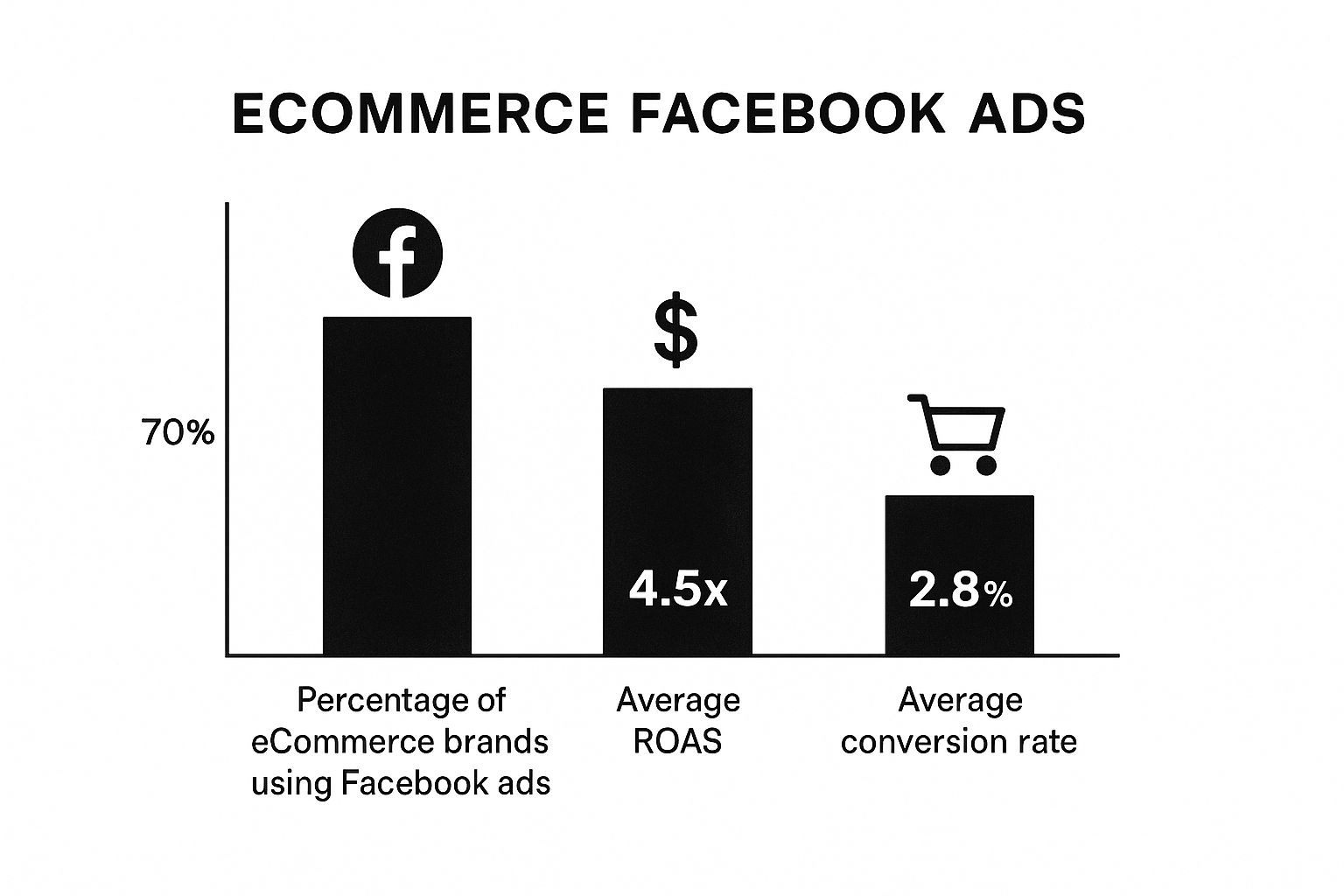
The dashboard gives you a clean, real-time look at your results, how much you've spent, and your cost per result. This is what allows you to make smart, data-driven decisions on the fly. Getting comfortable here is essential for optimizing your campaigns and making sure your ad spend is actually making you money. The difference between a campaign that thrives and one that just burns cash often comes down to a disciplined approach to choosing objectives and obsessively checking the results in this dashboard.
Aligning Your Ad Campaigns with Your Business Goals
A winning Facebook ad strategy doesn't start inside Ads Manager; it starts with a clear, honest look at your business's core financial health. Before you spend a single dollar on Facebook ads for ecommerce, you need to translate your business goals into concrete campaign objectives and key performance indicators (KPIs).
Just throwing money at a "Sales" objective without this groundwork is like trying to drive across the country without a map—you might get there eventually, but you'll burn through a ton of time and cash in the process. Your ad campaigns must be directly wired into the numbers that actually matter to your bottom line.
Connect Your Business Metrics to Campaign Goals
Every ecommerce business is unique, which is why any one-size-fits-all approach to ad metrics is doomed from the start. The key is to let your specific business model dictate your advertising strategy. Two of the most critical numbers you need to know inside and out are your Average Order Value (AOV) and Customer Lifetime Value (CLV).
These two metrics completely change how you should approach your campaigns:
-
High AOV / High Margin: Are you selling high-ticket items like furniture, custom jewelry, or luxury goods? Then your main goal is to maximize the value of every single conversion. You can stomach a higher cost per acquisition (CPA) because each sale is so profitable. You'll want to obsess over Return on Ad Spend (ROAS) and Conversion Value.
-
Low AOV / High CLV: Maybe you're a brand selling consumables or subscriptions—think coffee, skincare, or vitamins. That first purchase might be small, but the real money is in repeat business. In this scenario, getting a new customer in the door, even if you just break even, is a huge win. Your focus should be on CPA and building a solid customer base you can retarget and sell to again and again.
Many business owners get hung up on a low Cost Per Click (CPC). But a cheap click that never converts isn't just worthless—it’s a waste of your budget. I’d much rather pay more for a click from someone who is actually likely to buy. That’s why getting this alignment right is absolutely critical for success.
Set a Realistic, Data-Driven Budget
Once you know what you’re actually aiming for, you can finally set a budget that makes sense. A practical way to determine a starting budget is to work backward from your break-even point. First, you have to calculate your break-even ROAS. This is the return you need just to cover your ad spend and the cost of your products.
For instance, let's say your product costs you $25 to source and manufacture, and you sell it for $100. Your profit margin is $75. This means you can spend up to $75 to acquire one customer and still break even. Any CPA below that number is pure profit.
This simple math gives you a clear ceiling for what you can afford to spend per sale. Suddenly, budgeting isn't a guessing game anymore; it's a strategic exercise based on real numbers.
Think about these two different scenarios:
-
The Startup: A new online boutique is just trying to get its first 100 customers. Their primary KPI is the number of new customers, and they might be perfectly happy with a lower ROAS at first. They're playing the long game—building an audience and feeding their Pixel valuable data for the future.
-
The Established Retailer: A well-known brand with a proven, high CLV will run campaigns focused on maximizing conversion value. They’ll happily pay a higher CPA to acquire customers who buy multiple items at once because they know from experience those shoppers are far more likely to become loyal, long-term fans.
By defining what success looks like before you launch, you create a clear roadmap. This ensures that every dollar you invest in Facebook ads for ecommerce is pushing your business toward real, tangible, and profitable growth.
Crafting Ad Creatives That Actually Convert on Mobile
Let's get one thing straight: your ads will live or die on a phone screen. People are scrolling through their feeds with their thumbs, usually distracted, and you have a split second to make an impact. This isn't about just making your ads look good; it's about designing them for a fast-paced, thumb-driven world. If you want your Facebook ads for ecommerce to succeed, you need to create content that stops the scroll and screams value in an instant.

This means vertical video formats for Reels and Stories are no longer optional—they're essential. These full-screen, immersive placements are where the attention is, and they demand a completely different creative playbook than your old-school square or landscape ads. We're talking quick cuts, bold text overlays, and getting straight to the point.
Designing for the Mobile Feed
The first three seconds of your ad determine everything. Your creative has to immediately answer the viewer's unspoken question: "Why should I stop scrolling for this?" This means leading with your absolute best shot—the most compelling visual, the strongest hook, or the most irresistible offer.
A clothing brand, for instance, shouldn't waste time with a slow, scenic intro. Open with a dynamic clip of someone confidently wearing your most eye-catching product. Slap a bold text overlay on it like, "Your Search for the Perfect Summer Dress Ends Here." It’s direct, it respects their time, and it gives them a clear reason to watch.
The same goes for your ad copy. Keep it short and punchy. Use line breaks and even emojis to make it easy to read on a small screen. The goal is scannability. A potential customer should be able to grasp your entire value proposition without having to decipher a wall of text.
A common mistake is treating all placements as one and the same. An ad that crushes it in the main Facebook feed can completely bomb in Instagram Stories. You must use the "Customize for Placement" feature to make sure your visuals and text are optimized for every single environment.
Leveraging High-Impact Ad Formats
While single images and videos are your bread and butter, Meta has some incredibly powerful formats built specifically with ecommerce in mind. Two that you absolutely need to be using are Carousel and Dynamic Ads.
- Carousel Ads: These let you show off multiple products or features in one interactive, swipeable ad. They're perfect for showcasing a new collection, highlighting different benefits of a single product, or even telling a step-by-step story. A home decor shop could use a carousel to show a beautifully styled room, with each card linking to a different product in the photo.
- Dynamic Ads: This is where retargeting gets really smart. By connecting your product catalog to your Facebook ad account, you can automatically show people ads for the exact products they just looked at on your site. This level of personalization is incredibly effective for winning back abandoned carts and closing sales with your warmest audiences.
Facebook Ad Format Performance for Ecommerce
Choosing the right format is just as important as the creative itself. Different formats have different strengths, especially for ecommerce. This table breaks down some key metrics to help guide your choice.
| Ad Format | Average CTR | Best Use Case |
|---|---|---|
| Video Ads | 1.5% – 2.5% | Telling a brand story, demonstrating a product in action, grabbing attention in Reels/Stories. |
| Carousel Ads | 0.8% – 1.2% | Showcasing a product collection, detailing multiple features, sequential storytelling. |
| Image Ads | 0.9% – 1.3% | Highlighting a single, visually striking product or a strong promotional offer. |
| Collection Ads | 1.0% – 1.8% | Creating an instant storefront experience, allowing users to browse and buy multiple products. |
As you can see, motion and interactivity often lead to higher engagement. While a simple, powerful image can work wonders, formats like Video and Collection ads are specifically designed to drive ecommerce actions. Don't be afraid to test different formats against each other to see what your audience responds to.
The data doesn't lie: motion and interactivity win. Video ads consistently pull in more engagement than static images, and we've seen Reels achieve conversion rates 50% higher than standard image ads. These numbers are a clear signal that investing in high-quality video and interactive ad formats isn't a luxury anymore; it's a requirement to stay competitive.
For stores looking to scale up their creative game without the in-house hassle, our AdFuel+ solutions can build and manage a steady pipeline of high-performing ad creatives designed specifically for your brand.
Nailing Your Technical Setup for Accurate Tracking
You can have the most jaw-dropping ad creative and a perfectly dialed-in audience, but none of it matters if you can't measure what’s working. When it comes to running successful Facebook ads for ecommerce, everything is built on a foundation of clean, reliable data.
This technical setup isn't just a box to check—it's the most critical, non-negotiable step before you spend a single dollar.
Getting this right from the start means every click, add-to-cart, and purchase gets tracked correctly. This feeds Meta’s algorithm the exact information it needs to find more people who want to buy your products. Without it, you're just flying blind and burning cash based on guesswork.
Configuring Your Business and Ad Accounts
First things first, get organized in Meta Business Manager. Think of this as the command center for all your business assets—your ad account, Facebook Page, product catalogs, and, most importantly, your data sources like the Pixel.
Setting it up properly is simple but absolutely essential.
- Create Your Business Manager: If you’re starting from scratch, create one and link your business's Facebook Page to it.
- Add Your Ad Account: You can either connect an ad account you already have or create a fresh one right inside Business Manager.
- Assign People and Partners: This is where you can grant access to team members or an agency partner like DigitalAdvertisingDirect.com with the right permission levels.
This structure keeps your personal profile completely separate from your business activities and will save you from a world of headaches later on.
Installing and Verifying the Meta Pixel
The Meta Pixel is the lifeblood of your data. It’s a small piece of code you place on your ecommerce site, but its job is massive. It monitors what visitors do and sends that information back to Facebook, powering everything from conversion tracking and ad optimization to building incredibly powerful retargeting audiences.
Thankfully, most modern ecommerce platforms like Shopify or BigCommerce have simple integrations. Installing the Pixel is often as easy as copying your Pixel ID and pasting it into a specific field in your store's backend.
A huge mistake we see all the time is assuming the Pixel is working just because the code is on the site. You must verify that it's not only firing but also tracking the correct "events" as people move through your store.
The best tool for the job is the Meta Pixel Helper, a free Chrome browser extension. Once installed, go through your entire sales funnel yourself: view a product page, add something to your cart, start the checkout, and complete a test purchase. The Pixel Helper will light up and show you exactly which events are firing (and if there are any errors).
Setting Up Standard Ecommerce Events
For any ecommerce store, a few key events are non-negotiable. These are the signals that tell Meta what’s actually happening on your website, which allows the algorithm to go find more people who will take those same valuable actions.
Your must-have events are:
- ViewContent: Fires when someone looks at a specific product page.
- AddToCart: Triggers when an item is added to the shopping cart.
- InitiateCheckout: Fires the moment a user begins the checkout process.
- Purchase: The big one. This event fires when a transaction is successfully completed.
When you set these up, make sure you're also sending back crucial data like the value (the total order amount) and currency. This is what allows you to track your true Return on Ad Spend (ROAS)—the single most important metric for any campaign using Facebook ads for ecommerce. When you can trust your data, you can start scaling profitably.
Advanced Audience Targeting That Finds Buyers
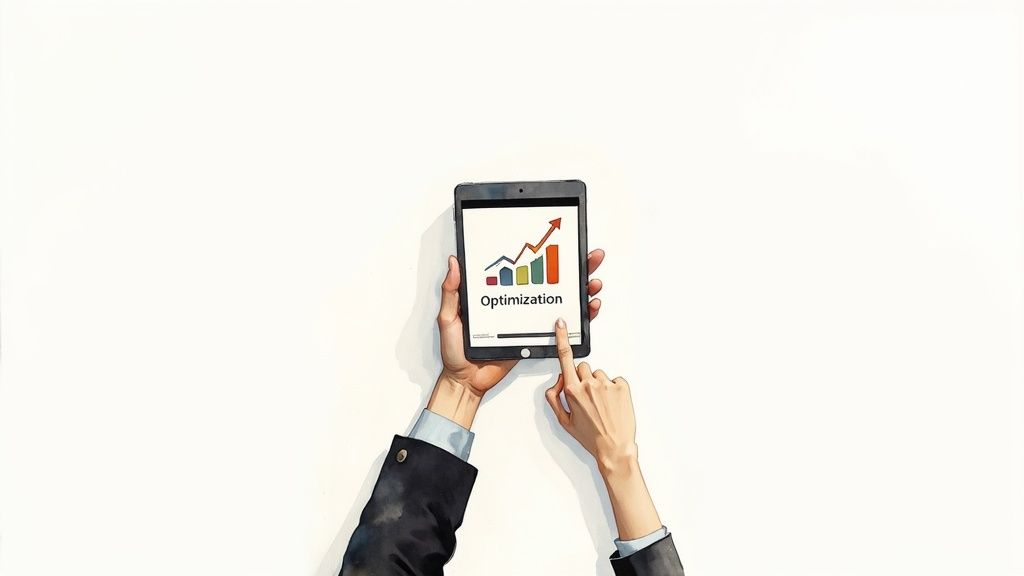
Getting in front of the right people is what separates profitable Facebook ads for ecommerce from expensive, frustrating experiments. While broad targeting has its moments, the real money is made when you stop shouting into the void and start having focused conversations with people ready to buy.
By going beyond basic interest targeting, you can connect with shoppers who aren't just curious about products like yours, but are actively showing signs they're about to make a purchase. These are the strategies that top-tier brands use to build predictable revenue.
Your Most Valuable Asset: Your Own Data
Your first-party data—the information from your website visitors and email list—is hands down your most powerful targeting tool. These are people who already know your brand. Meta’s Custom Audiences feature is how you turn this existing awareness into a goldmine for retargeting and finding new customers.
Every ecommerce store needs to have these essential Custom Audiences running:
- Website Visitors: Build audiences from specific actions people took on your site, like "All Website Visitors in the last 30 days" or "Visitors who viewed the 'Summer Collection' category."
- Cart Abandoners: This is your lowest-hanging fruit. Go after users who added items to their cart in the last 7 or 14 days but didn't finish checking out.
- Past Purchasers: Bring your existing customers back for more. You can show them new product launches, hit them with special offers, or present a compelling upsell. Segmenting this list by purchase value or frequency is a pro move.
- Email/SMS List: Upload your subscriber list to find them directly on Facebook and Instagram. This ensures your messaging stays consistent, no matter where they see you.
Think about the possibilities. A skincare brand can create a hyper-specific audience of people who added their best-selling serum to their cart last week. Then, they can serve them a powerful testimonial video and a small discount to nudge them over the finish line. That’s the kind of precision that wins.
Finding New Customers with Lookalike Audiences
Once you have solid Custom Audiences built from your best customers, you can unleash the power of Lookalike Audiences. This is where you essentially tell Meta, "Go find me more people who look and act just like my most valuable customers." The algorithm crunches thousands of data points to find new users who share key characteristics with your source audience.
For an ecommerce store, the best Lookalike Audiences come from high-intent actions:
- Always start with your "Purchasers" list. This is your highest-quality source, period.
- Create a 1% Lookalike Audience in your main sales country. This will be the most concentrated and similar group to your actual buyers.
- As you scale your budget, you can test broader Lookalikes (2-5%) or build them from other valuable sources, like your "Add to Cart" or "Initiate Checkout" custom audiences.
The quality of your source audience is everything. A Lookalike built from a list of 10,000 highly engaged purchasers will always outperform one built from 100,000 low-quality email sign-ups. Garbage in, garbage out.
Layering Interests and Behaviors for Pinpoint Precision
Custom and Lookalike audiences are fantastic, but you can get even more granular by layering interests with behaviors. Using this "AND" logic helps you zero in on your ideal shopper with incredible accuracy.
Instead of just targeting a massive interest like "Home Decor," you can refine it. For instance, a furniture store could target users who are interested in "Home Decor" AND also match a "Likely to Move" or "New Mover" behavior. Just like that, you've narrowed your audience from millions of casual browsers to a highly relevant group of people who are actively setting up a new home.
The platform's reach goes far beyond the main feed. Consider this: Facebook Marketplace attracts over 1.1 billion active users every month. Smart layering can help you find the 40% of Facebook users who actively shop there, catching them right when they're in a buying mood. You can see more details on these user habits to understand how this impacts commerce.
By combining these advanced strategies, you stop relying on luck. You build a structured, data-driven approach to consistently find new buyers, turning your ad spend into a true growth engine. For more advanced marketing insights, feel free to explore other topics on our Digital Advertising Direct blog.
Scaling Winning Campaigns Without Wasting Budget
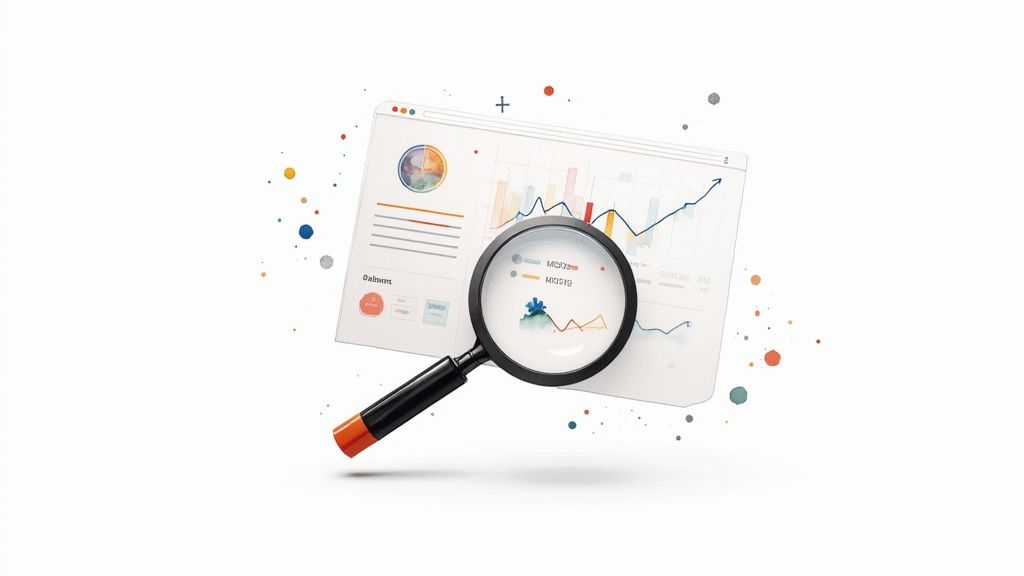
You finally did it. You found a winning ad. The sales are rolling in, your cost per acquisition (CPA) is looking healthy, and you can practically smell the profit.
So, what’s next? This is where many ecommerce brands stumble. The temptation is to dump more money into the ad and hope for the best, but that's a surefire way to kill your momentum. Scaling Facebook ads for ecommerce is a delicate dance, not a brute-force attack.
A common mistake is to get too aggressive, too fast. Doubling the budget on a hot ad set can instantly shock the algorithm, throw the campaign back into the learning phase, and tank performance overnight. The key is to be methodical.
The best practice here is to increase the budget of a performing ad set by no more than 15-20% every 2-3 days. This slow-and-steady approach lets Meta’s algorithm adjust, find new pockets of your ideal customers, and keep that profitable CPA you worked so hard to achieve. Think marathon, not a sprint.
Interpreting Your Results to Make Smart Changes
Data is your north star for every scaling decision you make. When you're running A/B tests or just checking in on your campaigns, you have to know which metrics actually matter. It's easy to get sidetracked by vanity metrics like likes and comments, but they don't pay the bills.
For any ecommerce campaign, these are the numbers you need to live and breathe:
- Return on Ad Spend (ROAS): This is the big one. Is your campaign making more money than it costs? It’s the ultimate measure of whether you’re profitable.
- Cost Per Purchase (CPA): How much are you paying for each sale? This number absolutely must stay below your product's profit margin.
- Click-Through Rate (CTR): Are people actually stopping their scroll to click your ad? A falling CTR is often the canary in the coal mine, signaling the first signs of ad fatigue.
If you have an ad with a fantastic CTR but a terrible ROAS, it means you're great at grabbing attention but failing to close the deal. There’s a disconnect between what your ad promises and what your landing page delivers. On the flip side, a low CTR but a high ROAS tells me you have a killer offer that isn't getting seen by enough people. That points directly to a problem with your creative or targeting.
Expanding Audiences and Refreshing Creatives
Scaling isn’t just about spending more money (vertical scaling); it’s also about finding more people to spend it on (horizontal scaling). Once an ad has proven itself, it's time to duplicate that ad set and start testing it against entirely new audiences.
A powerful technique is taking your best-performing ad creative—the one with all the social proof and a solid conversion history—and introducing it to a fresh, high-potential Lookalike Audience. This lets you leverage a proven winner to break into new territory, which significantly lowers your risk.
But remember, even the best ads have a shelf life. When you see your ad frequency creeping up past 3-4 and your CTR starts to dip, that’s a flashing red light for creative fatigue. Your audience has seen the ad too many times, and it’s become invisible.
This is your cue to bring in fresh creative variations. You don't need to start from scratch. Instead, create spin-offs of your winning concept. If a product demo video crushed it, try a new version with a different opening hook, add a customer testimonial, or splice in some user-generated content. Keeping your creative pipeline full is absolutely essential for long-term, sustainable growth.
Scaling campaigns requires constant attention and a real gut for interpreting performance data. If you’re ready to grow your sales but just don't have the time for the day-to-day management, it might be time to bring in an expert. You can book a free strategy session with us to map out a clear path to profitable scaling.
Your Top Questions, Answered
Let's tackle some of the most common questions that pop up when running Facebook ads for ecommerce. I'll give you straight, practical answers to help you sidestep common pitfalls and fine-tune your approach.
What's a Realistic Starting Budget?
If you're just getting your ecommerce store off the ground, a daily budget of $20 to $50 per campaign is a great place to start. This gives Meta's algorithm enough data to chew on, helping it move past the initial "learning phase" so you can get real performance insights without betting the farm.
Our advice? Don't spread that initial budget too thin. Focus all your firepower on promoting just one or two of your star products. This concentrated effort will show you what’s working (and what’s not) much faster.
How Often Should I Refresh My Ad Creatives?
Let the data tell you. The key metric to watch here is your ad frequency. Once the average person in your audience has seen your ad more than 3-4 times in a week, you're entering the danger zone of ad fatigue, and performance will almost certainly start to dip.
Be on the lookout for warning signs like a falling click-through rate (CTR) or a climbing cost per purchase. If you're spending big, you might need to swap out creatives every one or two weeks. For smaller budgets, a monthly refresh is usually enough to keep things from getting stale.
"Refreshing" doesn't always mean starting from scratch. Sometimes, all it takes is a new headline, a different video hook, or even just a new background color on an image to make an ad feel brand new again.
What Should I Do If My Meta Pixel Is Not Tracking Purchases?
First, run a quick diagnostic. Install the free Meta Pixel Helper Chrome extension and check your website. This fantastic tool will flag common issues, like a Pixel firing twice or missing key event data.
Next, head over to the Events Manager inside your Meta Business account. You need to confirm that your "Purchase" event is set up correctly and actually receiving information. Nine times out of ten, tracking problems come from a recent website theme change, a conflicting app, or a simple misconfiguration in your ecommerce platform's event setup.
Feeling like you need a team of pros to manage your campaigns and ensure every dollar is working for you? Want to simplify your ad campaigns? Discover our fully managed Meta and Google Ads solutions.
